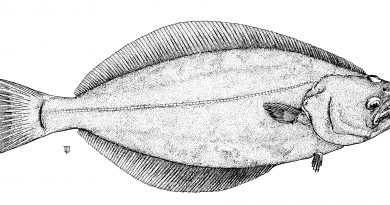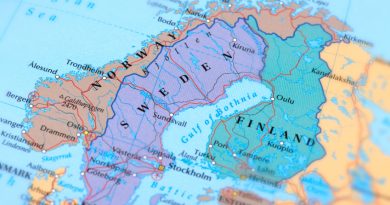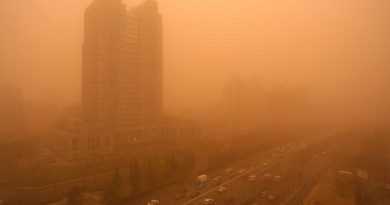As climate changes, Sami herders need to feed reindeer as rain creates ice layer
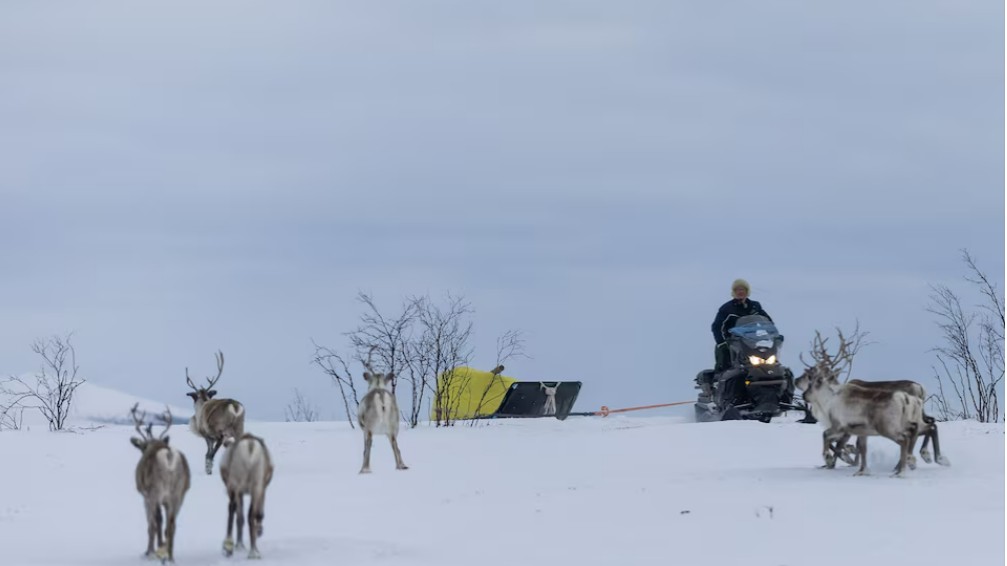
Driving slowly on his snowmobile, reindeer herder Nils Mathis Sara spreads animal feed for hundreds of his reindeer gathered in the Finnmark mountain plateau in Arctic Norway – something he wished he did not have to do.
“This is an emergency situation,” said the 65-year-old Indigenous Sami herder. “I am not supposed to feed them. They are supposed to feed me.”
Normally reindeer find their own food, digging through the snow with their hooves to eat the lichen buried underneath.
But every winter for the past decade Sara has had to buy animal feed to supplement their diet so they can make it through winter, when temperatures can drop to minus 40 degrees Celsius (minus 40 degrees Fahrenheit).
Until recently Finnmark experienced stable, below-freezing conditions, meaning precipitation came as snow only in winter. But in recent years, there have been milder periods, with temperatures rising above freezing.
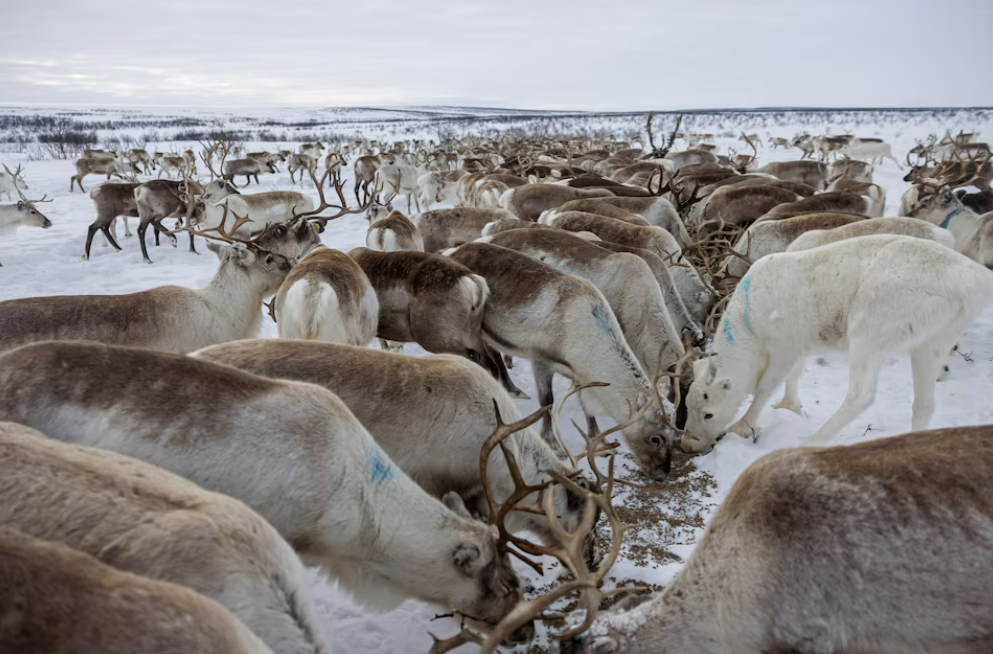
That means rain, rather than snow, falling on the ground, which then freezes when it gets colder, creating a layer of ice that makes it tough for the reindeer to reach the lichen.
“It is especially hard for the younger reindeer as their hooves are not strong enough to break through,” Sara said.
One morning in March when temperatures reached minus 10 C, Sara and his nephew Nils Olav Lango spread 1.6 metric tons of tiny brown pellets across the pastures where the family’s herd graze. They have been doing it every other day since February.
“I should really be doing this every day but economically it does not make sense,” said Sara.
Feeding the animals also leads to unintended consequences.
Later that day, Sara spots hundreds of reindeer that are not his family’s on his district’s pastures – each herding group has the right to use a specific area and each keep to their own.
Sara races on his snowmobile to talk to the herder in charge and ask him to move the animals away. They had been attracted by the smell of the feed that Sara had spread.
In addition, feeding the reindeer, which are semi-wild, turns them progressively into fully domesticated animals and thus turns herders into farmers, going against centuries-long Sami traditions.
“When we feed the reindeer, they change their behavior and become more accustomed to humans,” Sara said. “This is not our way.”
Reporting by Gwladys Fouche in Geadgebarjavri; Editing by Alison Williams.
Related stories from around the North:
Arctic: Sami-led project seek to revitalize Indigenous across Arctic Europe, Eye on the Arctic
Canada: As grizzlies and hybrid bears push north, N.W.T. harvesters look to protect caribou, CBC News
Finland: Finnish Court annuls 2023 Sámi elections, The Independent Barents Observer
Sweden: Expert panel: Sweden won’t meet its climate targets, Radio Sweden
United States: Warm weather in Alaska highlights risk climate change poses to future AWG, CBC News

